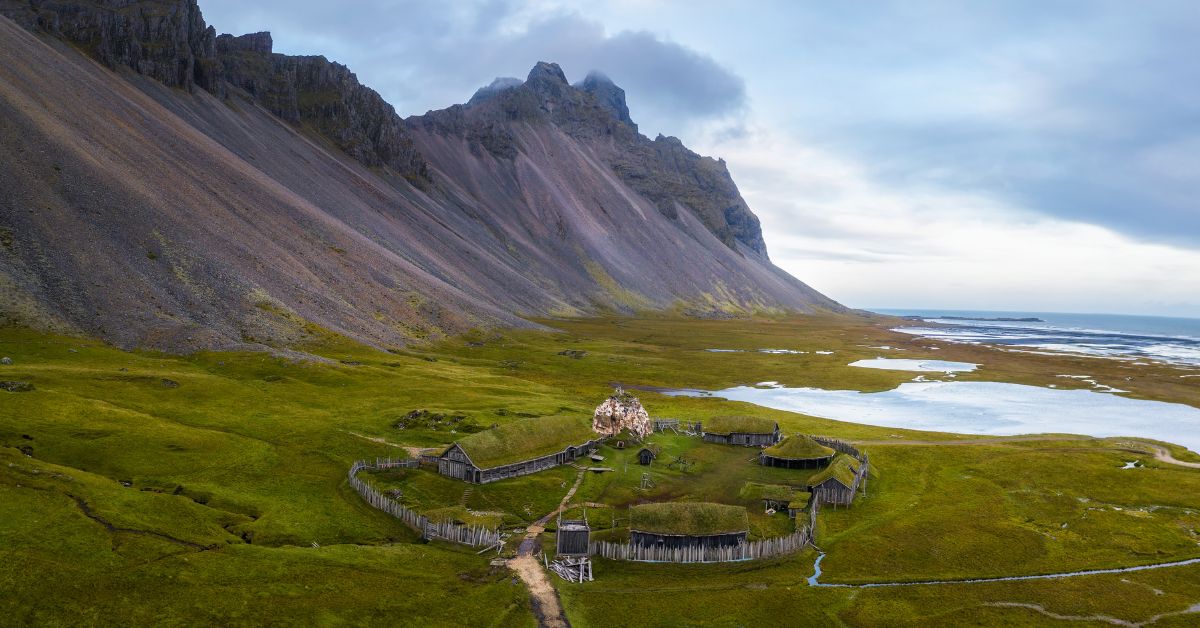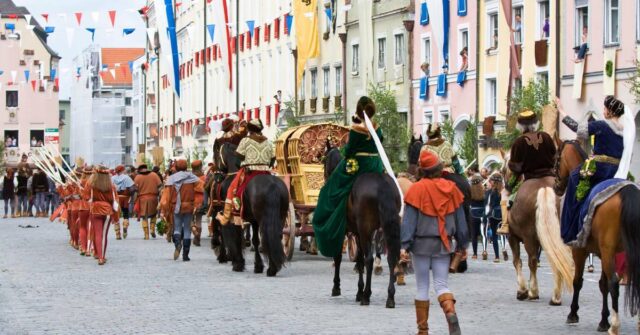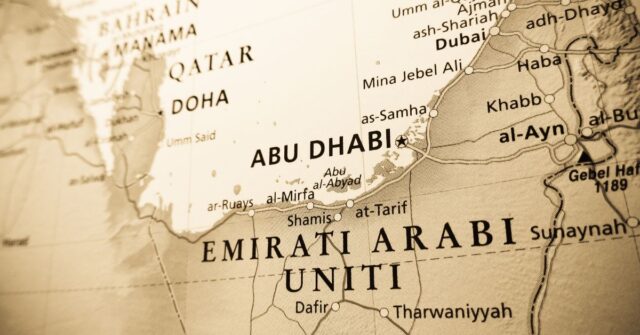Vikings, known for their seafaring prowess and adventurous spirit, left an indelible mark on history through their explorations and settlements beyond their Scandinavian homeland.
This article delves into the various regions where Vikings established colonies, highlighting their impact on local cultures, daily life, and archaeological findings.
Introduction
The Viking Age, spanning from the late 8th century to the early 11th century, was marked by significant exploration and expansion.
Driven by a combination of economic necessity, overpopulation, and a thirst for adventure, Vikings ventured far and wide, establishing settlements that would influence the course of history in various regions.
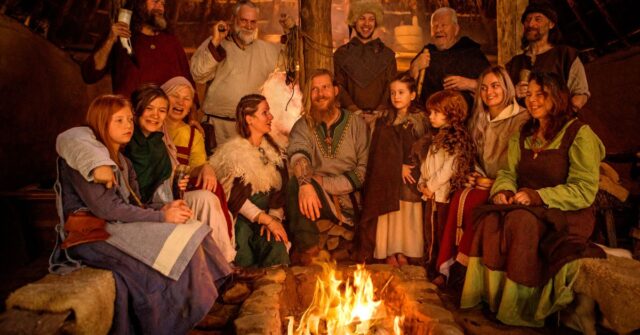
Overview of Viking Exploration
The Viking Age, spanning from the late 8th century to the early 11th century, marked an era of extensive exploration, trade, and settlement by Norse seafarers.
Vikings ventured far beyond their Scandinavian homelands, establishing colonies across Europe and the North Atlantic.
Their remarkable navigational skills and longships enabled them to traverse vast distances, leaving a lasting legacy on the regions they settled.
Motivations Behind Viking Migrations
Several factors drove the Vikings to explore and settle new lands. Overpopulation, political strife, and a desire for wealth and adventure prompted many to leave Scandinavia.
The pursuit of arable land and new trading opportunities also played significant roles.
Viking sagas and historical records reveal a complex interplay of economic necessity and the intrinsic Viking spirit of exploration.
Viking Settlements in Iceland
Iceland’s harsh and beautiful landscape provided a new frontier for Viking settlers.
These Norse pioneers adapted to the environment, creating a unique culture that blended traditional Norse practices with new innovations suited to their new home.
The settlement of Iceland is a fascinating example of Viking resilience and ingenuity.
The Discovery of Iceland
Iceland’s discovery is attributed to Norse explorer Naddodd, who landed on the island around 860 AD.
Subsequent voyages by Garðar Svavarsson and Flóki Vilgerðarson confirmed its potential for settlement.
The name “Iceland” was coined by Flóki, inspired by the icy landscape he encountered during a harsh winter.
Early Settlers and Their Origins
Settlement of Iceland began in earnest around 870 AD, primarily by Norwegians fleeing the authoritarian rule of King Harald Fairhair.
These early settlers were a mix of Norsemen and Celts, the latter having been brought from the British Isles as slaves or concubines.
Genetic studies confirm a significant Celtic admixture in the Icelandic population.
Daily Life and Culture
Life in Viking Iceland revolved around farming, fishing, and trading. The settlers established farmsteads, each comprising longhouses built from turf, wood, and stone.
The Alþingi, the Icelandic parliament, was founded in 930 AD, serving as both a legislative and judicial body.
Icelandic culture was rich in oral traditions, including sagas that chronicled the lives and deeds of the settlers.
Archaeological Evidence and Findings
Archaeological excavations in Iceland have unearthed numerous artifacts, including tools, jewelry, and household items, providing insights into the daily lives of the settlers.
Sites like the ancient settlement at Þjórsárdalur and the farmstead at Stöng offer glimpses into the architecture and lifestyle of Viking-age Icelanders.
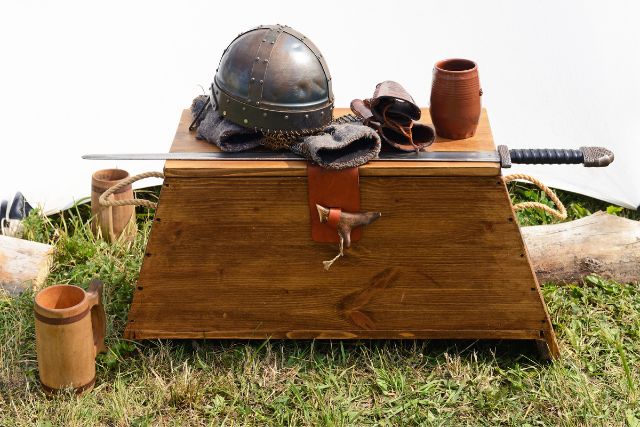
Viking Settlements in Greenland
Greenland, with its challenging climate and terrain, was another area where Vikings established a foothold.
Erik the Red’s establishment of colonies here showcased the Vikings’ ability to adapt to even the most inhospitable environments.
The story of Greenland’s Viking settlements is one of survival, adaptation, and interaction with the natural world.
Erik the Red and the Founding of Greenland
Erik the Red, exiled from Iceland for manslaughter, is credited with founding the first Viking colony in Greenland around 985 AD.
Naming the land “Greenland” to attract settlers, Erik established two main settlements: the Eastern and Western Settlements, located in the fjords of southern Greenland.
Challenges of Greenland Settlement
Greenland presented numerous challenges for the settlers, including a harsh climate, limited arable land, and isolation.
Despite these difficulties, the Norse adapted by relying heavily on marine resources, such as fish, seals, and whales, supplemented by limited farming and animal husbandry.
Trade and Economy
Greenland’s economy was largely based on trade. The settlers exported walrus ivory, furs, and live animals to Europe in exchange for essential goods like timber, iron, and grains.
The Norse also engaged in hunting and trapping to supplement their diet and trade supplies.
Archaeological Discoveries
Archaeological sites in Greenland, such as the Brattahlíð farmstead and the church at Hvalsey, provide valuable information about the Norse settlers.
Excavations have revealed well-preserved ruins of houses, churches, and artifacts that shed light on their lifestyle and adaptations to the harsh environment.
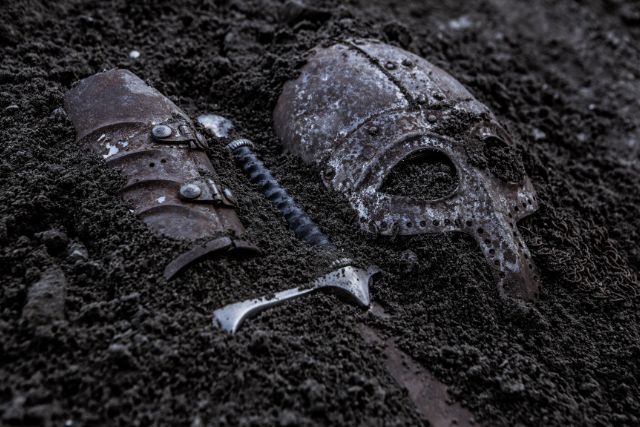
Viking Settlements in the Faroe Islands
The Faroe Islands, located between Iceland and Norway, served as a crucial stopover for Viking explorers. These islands provided a strategic base for further expeditions into the North Atlantic.
The settlements in the Faroe Islands illustrate the Vikings’ strategic use of geography in their expansion efforts.
Initial Settlement and Expansion
Viking settlement in the Faroe Islands began around the mid-9th century. The islands served as a strategic stopover for Viking ships traveling between Scandinavia, Iceland, and the British Isles.
The Norse established farmsteads and small communities, utilizing the islands’ resources for agriculture and fishing.
Farmsteads and Agricultural Practices
Faroese Viking farmsteads were typically located in fertile valleys and coastal areas. The settlers practiced landnám, or land-taking, which involved clearing and cultivating land for farming.
They raised livestock such as sheep, cattle, and pigs, and grew crops like barley and oats.
Cultural and Economic Impact
The Viking presence significantly impacted the cultural and economic landscape of the Faroe Islands. Norse traditions and place names are still evident today.
The economy was primarily agrarian, but trade with neighboring regions also played a crucial role.
Significant Archaeological Sites
Archaeological excavations in the Faroe Islands have uncovered numerous Viking sites, including the village of Toftanes in Leirvik.
Findings include remains of longhouses, artifacts like quern stones and spindle whorls, and evidence of early farming and domestic life.
Viking Settlements in the British Isles
Viking incursions into the British Isles began with raids but soon transitioned to permanent settlements.
The integration of Viking culture with local traditions created a unique blend that has left lasting legacies in place names, genetic heritage, and cultural practices.
The British Isles were profoundly shaped by Viking influence.

Settlements in England
The Viking presence in England began with the raid on Lindisfarne in 793 AD.
Over time, Norse settlers established numerous colonies, particularly in the Danelaw region, which encompassed parts of modern-day Yorkshire, East Anglia, and the East Midlands.
These settlements integrated with local communities, influencing culture and language.
Settlements in Ireland
Viking settlements in Ireland included major towns like Dublin, Waterford, and Limerick. These began as trading posts and evolved into significant urban centers.
The Norse in Ireland engaged in trade, craft production, and agriculture, intermarrying with the local population and contributing to the cultural melting pot.
Interactions with Local Populations
Vikings in the British Isles often interacted with local populations through both conflict and cooperation.
While initial encounters were marked by raids and warfare, many Norse settlers eventually assimilated, adopting local customs and intermarrying with native inhabitants.
Archaeological Evidence and Finds
Archaeological evidence from Viking sites in the British Isles includes remnants of longhouses, burials, and artifacts such as weapons, tools, and jewelry.
Notable finds include the Viking burial ship at Sutton Hoo and the rich hoard of silver discovered at the Cuerdale Hoard site.
Viking Settlements in Normandy
In Normandy, the Viking presence led to the establishment of a powerful duchy that would play a significant role in European history.
The assimilation of Viking settlers into the local culture created a unique Norman identity that combined Norse and Frankish elements.
This region’s history is a testament to the Vikings’ ability to integrate and influence.
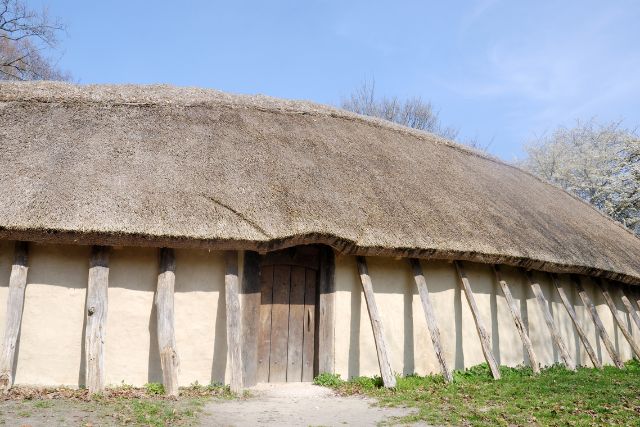
The Viking Influence in Normandy
In the early 10th century, Viking leader Rollo was granted land in northern France by the Frankish king Charles the Simple, creating the Duchy of Normandy.
The Norse settlers quickly assimilated, adopting the French language and culture while maintaining their own traditions.
Place Names and Cultural Legacy
The Norse influence in Normandy is evident in place names ending in -tot, -londe, and -hogue, derived from Old Norse words.
This linguistic heritage is a testament to the lasting impact of Viking settlers on the region’s geography and culture.
Archaeological and Historical Insights
Archaeological sites in Normandy, such as Jumièges Abbey and the fortified town of Fécamp, provide evidence of Viking influence.
Historical records and artifacts from these sites illustrate the Norse contributions to the region’s development and defense.
Viking Settlements in Other Regions
Beyond the well-known settlements in Iceland, Greenland, and the British Isles, Vikings also ventured into other regions, including North America and the Baltic.
These expeditions further highlight the Vikings’ exploratory spirit and their impact on a global scale. Each new settlement added to the rich tapestry of Viking history.
Explorations and Settlements in North America
Viking explorations led by Leif Erikson around 1000 AD resulted in the establishment of a short-lived settlement at L’Anse aux Meadows in Newfoundland, Canada.
This site, now a UNESCO World Heritage site, provides evidence of the first known European presence in North America.
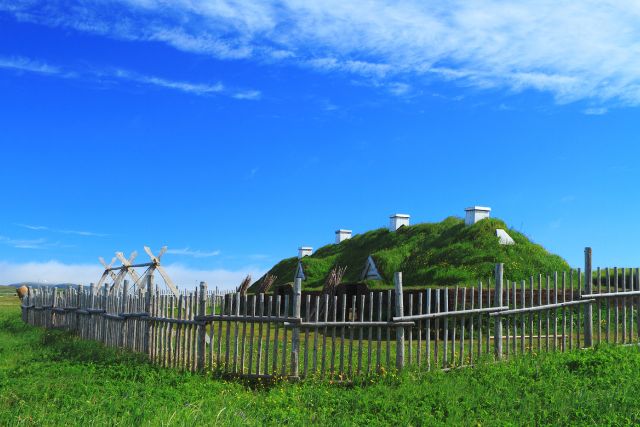
Viking Presence in the Baltic Region
Vikings also established settlements along the Baltic Sea, including in present-day Russia, Latvia, and Estonia.
These colonies served as trading hubs and facilitated interactions between the Norse and Slavic peoples, influencing the region’s development.
Other Notable Settlements
Viking settlers ventured into other regions, including the Orkney and Shetland Islands, Scotland, and the Isle of Man.
These settlements varied in size and influence, but all contributed to the spread of Norse culture and traditions across Europe.
Daily Life in Viking Settlements
Daily life in Viking settlements was a blend of agriculture, craftsmanship, and trade.
Vikings were skilled farmers, builders, and traders, creating vibrant communities that were both self-sufficient and connected to broader trade networks.
Understanding their daily lives provides insight into the social structures and economic practices of the time.
Housing and Architectural Styles
Viking settlers built longhouses, typically constructed from wood, turf, and stone.
These structures, characterized by their elongated shape and central hearths, provided shelter for both people and livestock. Additional buildings included workshops, storerooms, and communal halls.
Inside the longhouse, the central hearth served as the focal point for cooking and heating. The roof was often thatched or covered with sod to provide insulation against the harsh climates.
Separate areas within the longhouse were designated for different activities, including sleeping, storage, and social gatherings.
These structures varied in size and complexity, reflecting the status and wealth of the inhabitants.
Agricultural Practices and Diet
Agriculture was a cornerstone of Viking life, with settlers cultivating crops like barley, oats, and rye. They also raised livestock, including cattle, sheep, pigs, and goats.
The diet of Viking settlers was diverse, incorporating dairy products, meat, fish, and foraged foods such as berries and nuts. Farming techniques included crop rotation and the use of manure to fertilize fields.
Fishing was another vital activity, with coastal settlements relying heavily on the abundant marine resources. Fish, such as herring and cod, were commonly dried or smoked for preservation.
The Vikings’ diet was supplemented by hunting and gathering, including wild game and edible plants.
Feasts and communal meals played a significant role in social life, often featuring roasted meats and homebrewed ale.
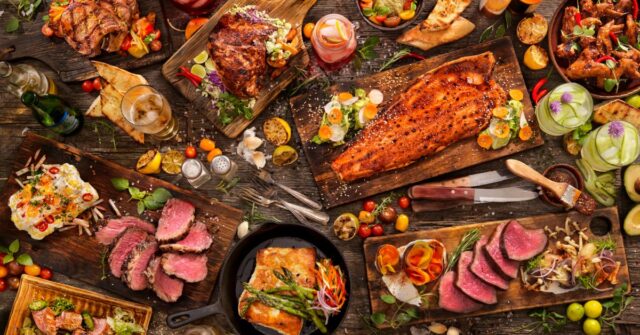
Social Structure and Governance
Viking society was organized into a hierarchical structure with a clear division between free men, known as karls, and slaves, or thralls.
At the top of the social ladder were the jarls, or noble class, who owned large estates and held significant political power. The majority of settlers were karls, who were farmers, craftsmen, and traders.
Governance in Viking settlements was often communal, with local assemblies called things serving as forums for legal disputes, decision-making, and community matters.
The Alþingi in Iceland is one of the oldest parliamentary institutions in the world, established in 930 AD.
These assemblies were attended by free men and were crucial in maintaining order and addressing conflicts within the community.
Religious Practices and Conversion to Christianity
Initially, Viking settlers practiced the Norse religion, which included a pantheon of gods such as Odin, Thor, and Freyja.
Religious rituals and ceremonies were conducted at home or at local temples. Sacrifices, both animal and human, were part of their religious practices, aimed at appeasing the gods and ensuring prosperity.
The conversion to Christianity began in the late 10th century and progressed gradually. Christian missionaries, often sent from Norway, faced resistance but eventually succeeded.
By around 1000 AD, Christianity had taken hold in many Viking settlements, leading to the construction of churches and the integration of Christian customs into everyday life.
This transition significantly influenced social norms and legal structures.
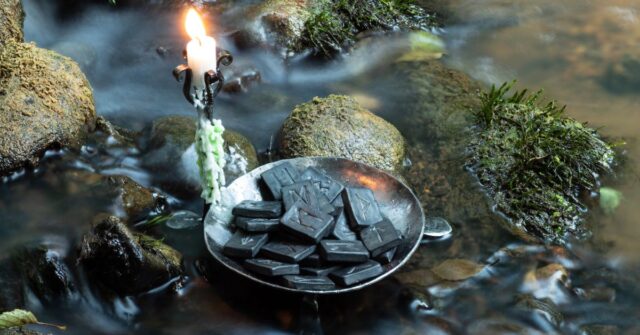
Archaeological Discoveries and Their Significance
Archaeological discoveries have been crucial in uncovering the details of Viking life.
Sites across former Viking territories have revealed artifacts, structures, and burial sites that shed light on their practices and interactions with other cultures.
These findings continue to shape our understanding of the Viking Age.
Major Excavation Sites
Significant archaeological sites across the former Viking world have provided invaluable insights into their settlements and way of life.
Sites like Jelling in Denmark, with its famous runestones and burial mounds, and Hedeby, an important trading center, offer a glimpse into the Vikings’ sophisticated societal structure and their extensive trade networks.
In Iceland, sites such as Þingvellir, the site of the ancient Alþingi, and the well-preserved farmstead at Stöng, showcase the architectural ingenuity and adaptability of the Vikings.
Greenland’s Brattahlíð and Hvalsey Church provide evidence of the challenges faced by Norse settlers in harsh environments.
Key Artifacts and Their Interpretations
Artifacts uncovered from Viking sites include a wide range of items, from everyday tools and household items to weapons and jewelry.
For example, the discovery of Viking swords and axes highlights their craftsmanship and martial prowess, while domestic items like pottery, combs, and textile tools offer insights into daily life and domestic activities.
Religious artifacts, such as Thor’s hammer pendants and Christian crosses, reveal the syncretic nature of Viking religious practices during the period of conversion.
The wealth of runestones found in Sweden, Denmark, and Norway, inscribed with commemorative texts, provides valuable information about Viking social hierarchies, beliefs, and linguistic practices.
Modern Technologies in Viking Archaeology
Advancements in archaeological methods have revolutionized our understanding of Viking settlements.
Technologies such as ground-penetrating radar (GPR), LiDAR, and 3D modeling have enabled archaeologists to uncover buried structures without extensive excavation.
DNA analysis of human remains has provided new insights into the genetic makeup and migration patterns of Viking populations.
Isotope analysis of bones and teeth has shed light on the diets and origins of Viking settlers, revealing a mix of local and imported foods.
These modern techniques continue to uncover new details about the Vikings’ lives, their interactions with other cultures, and their impact on the regions they colonized.
The Lasting Legacy of Viking Settlements
The legacy of Viking settlements is evident in the cultural and genetic makeup of regions across Europe and the North Atlantic.
From place names to legal traditions, the influence of Viking settlers remains a significant part of many societies. Their adventurous spirit and innovative practices continue to inspire and fascinate.
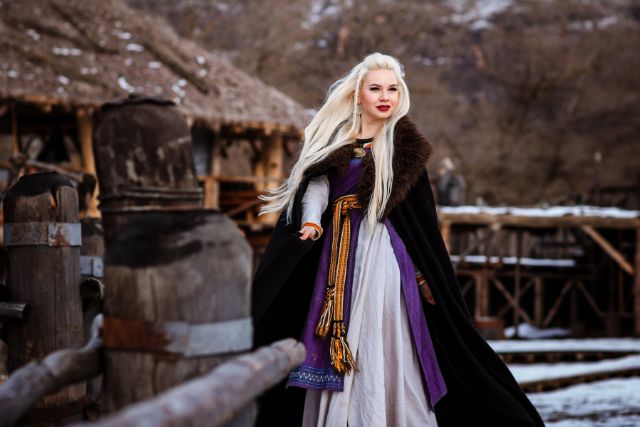
Influence on Modern Cultures
The legacy of Viking settlements is evident in many modern cultures, particularly in the regions they once inhabited.
Scandinavian influences can be seen in place names, legal systems, and cultural traditions across Europe and the North Atlantic.
The impact of Viking exploration and trade is also reflected in the genetic makeup of populations in these areas.
Viking myths and legends continue to inspire literature, art, and popular culture.
From the sagas and Eddas of medieval Iceland to modern-day films and television series, the tales of Viking adventures and heroism have captivated audiences for centuries.
Festivals and reenactments of Viking life, such as those held in Norway and Iceland, celebrate this rich heritage.
Place Names and Linguistic Contributions
Many place names in England, Scotland, Ireland, and Normandy bear the marks of Viking influence.
Suffixes like -by (meaning village or town) and -thorpe (meaning farm or settlement) are common in regions once settled by Norsemen.
In Normandy, the suffixes -tot and -londe reflect the lasting presence of Viking settlers.
The linguistic contributions of the Vikings extend beyond place names. Many Old Norse words have entered the English language, particularly in areas related to seafaring, law, and daily life.
Words like “berserk,” “ransack,” and “knock” have their origins in Old Norse, showcasing the linguistic impact of the Vikings on modern English.
Cultural and Genetic Impact
The Vikings’ genetic legacy is visible in the DNA of populations in the British Isles, Iceland, and other regions they settled.
Genetic studies have shown a significant Norse contribution to the gene pool, particularly in coastal and island communities.
This genetic heritage is a testament to the extensive intermingling between Vikings and local populations.

Culturally, the Vikings left an indelible mark on the regions they settled.
Their legal traditions, such as trial by jury and certain aspects of property law, influenced the development of legal systems in medieval Europe.
Viking art, characterized by intricate metalwork and wood carvings, has inspired countless artists and craftsmen throughout the centuries.
Conclusion
The story of Viking expansion is one of exploration, adaptation, and influence.
Their settlements beyond Scandinavia not only shaped the regions they inhabited but also left a lasting legacy that continues to be felt today.
Ongoing research and archaeological discoveries will undoubtedly continue to uncover new aspects of this fascinating period in history.
Summary of Viking Expansion and Influence
The Viking Age was a period of unprecedented exploration, settlement, and cultural exchange.
From the icy shores of Iceland to the fertile valleys of Normandy, Viking settlers left a lasting imprint on the lands they colonized.
Their navigational skills, agricultural practices, and social structures enabled them to thrive in diverse and often challenging environments.
The Importance of Continued Research
Continued research into Viking settlements is essential for deepening our understanding of this dynamic period in history.
Advances in archaeological techniques and interdisciplinary studies promise to uncover new insights into the lives and legacies of the Vikings.
By exploring the past, we can gain a richer appreciation for the cultural heritage and enduring influence of these remarkable seafarers.

